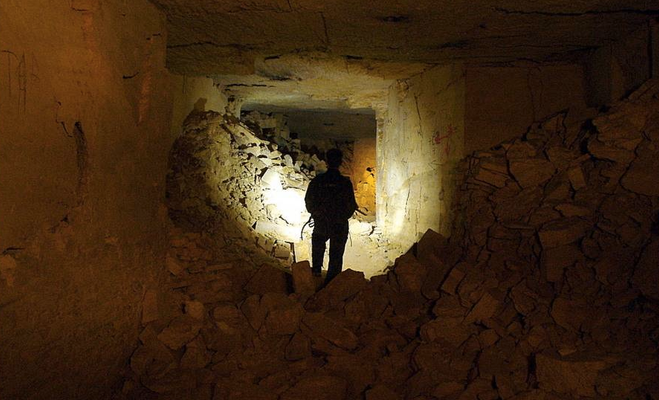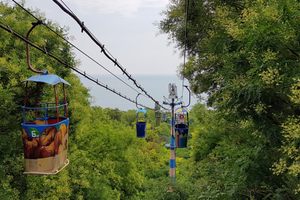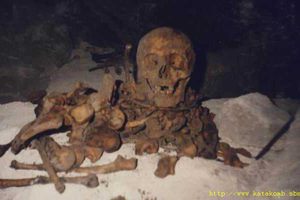About
In Odesa, when someone's water line suddenly breaks, or a house settles oddly, or a family pet goes missing, it is not uncommon for Ukrainians to curse about "those damn catacombs."
They are not being delusional, for underneath their houses run some 2,500 kilometers of catacombs, carved into the limestone that the city is built upon. (To get a sense of how much tunnel system that really is, it is only 2138 kilometers from Odesa to Paris.)
The date of the earliest catacombs in Odesa is difficult to determine (as they were all widened at a later date), but they likely date back to the 1600s, if not farther. However, the catacombs began to truly grow into their astonishing, labyrinthine form in the early 1800s, when the limestone quarried from them was used to build much of the city.
Odesa's catacombs quickly became the preferred hideout of rebels, criminals, and eccentrics. During WWII, although the Soviets had been forced out of the city, they left behind dozens of soviet-organized Ukrainian rebel groups hidden below the city in the expansive catacombs.
Hiding in the catacombs for as much as 13 months, literally below the noses and feet of the Nazis above, the rebels waited for a chance to strike or relay information. These men and women would play chess, checkers, cook, and listen to Soviet Radio, generally trying to make a normal life below the surface of the city. They tried to ignore the malnutrition and malaria which afflicted many of them. Many of the partisan groups lived in the catacombs for the entirety of the rest of the war, and on occasion the partisan groups even managed to blow up German facilities.
The Fascist Germans and Romanians meanwhile chose random catacomb exits and sealed them, hoping to trap the men below the city forever, and occasionally tossed poison gas canisters into the catacombs hoping to smoke the soviet rebels out.
Once the war was over, the catacombs became home to numerous smuggling and criminal groups, who widened and created new tunnel systems of their own. In 1961, the "Search" (Poisk) club was created, headed by Constantine Pronin of the Paleontological Museum of OSU, and became the first official catacomb exploration unit, meant to explore the catacombs and help document the history of the partisan movement.
Today there is an entire Ukrainian subculture of catacomb explorers with dozens of semiprofessional groups, often quite competitive, exploring the catacombs. They go on multi-day underground treks, known as expeditions, to document and map the system. Should someone get lost in the catacombs (as happens every couple of years), these groups put aside their differences and mount large search expeditions. They have rescued a number of children who have wandered into the catacombs.
In September 1995, in honor of the 200th anniversary of Odesa, the record for the longest underground journey in the catacombs was broken by a 27-hour continuos journey of over 40 kilometers. (Had they walked in a straight line the journey would only have been 9.5 kilometers.) Shortly after this the mapping of a huge unexplored area of the catacombs known as "K-29" was begun.
Partisan weapon caches such as rifles and grenades are occasionally still found within the tunnels, and about once every five years a body is found. On rare occasions these bodies are almost perfectly mummified, freeze dried by the cold, dry air of the tunnels. While most of the time the bodies found are from long ago, stumbling across old bones of soldiers and smugglers from more recent accidents has been known to happen.
On January 1st, 2005, some Odesa teens decided to spend New Year's night partying in the catacombs. However, in the drunken revelry a member of the group, a girl named Masha, became separated and lost in the catacombs. She spent three days wandering in the freezing cold and pitch black before she died of dehydration. It took two years before the police were able to locate her body and retrieve it from the catacombs.
While going into the catacombs is not illegal, there is only one small portion of the catacombs that is officially open to the public, which can be seen at the "Museum of Partisan Glory" in Nerubayskoye, north of Odesa.
It would be extremely dangerous to try and explore the catacombs on one's own. However, professionals can be hired at the cost of 250 hryvnia per person, depending on the time spent underground, the complexity and length of the route, the number of tourists, and options for delivery to the site entrance to the underground area.
Related Tags
Community Contributors
Added By
Published
July 2, 2011
































































